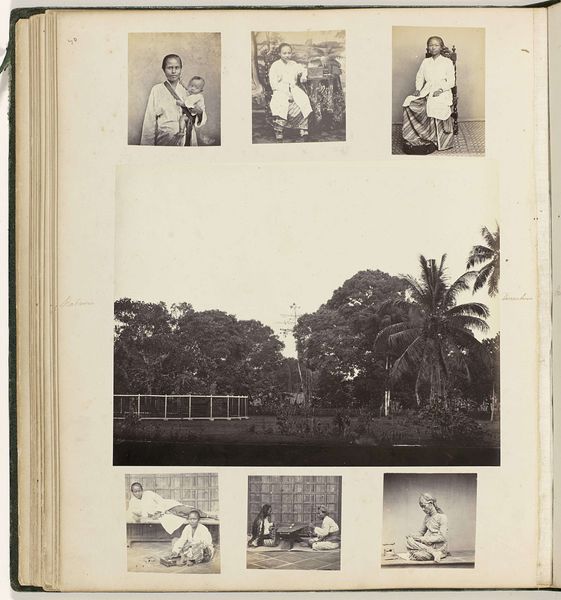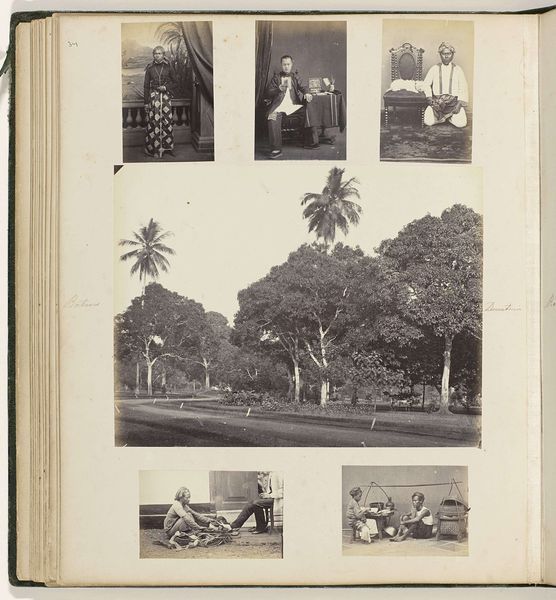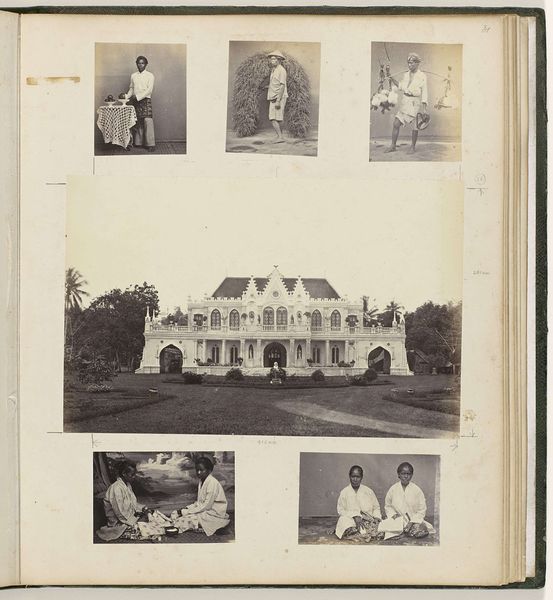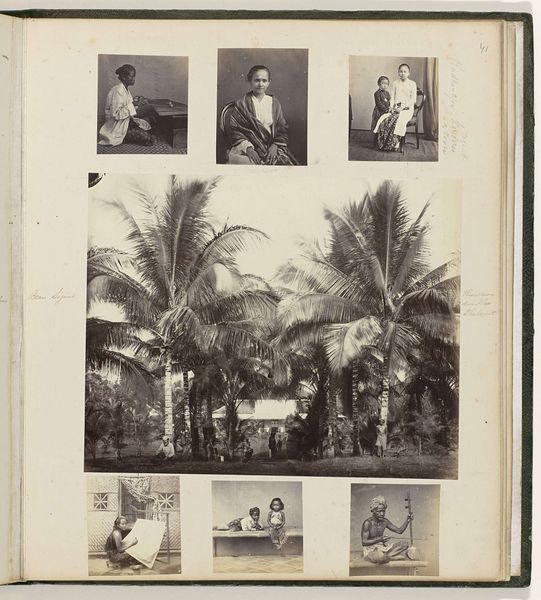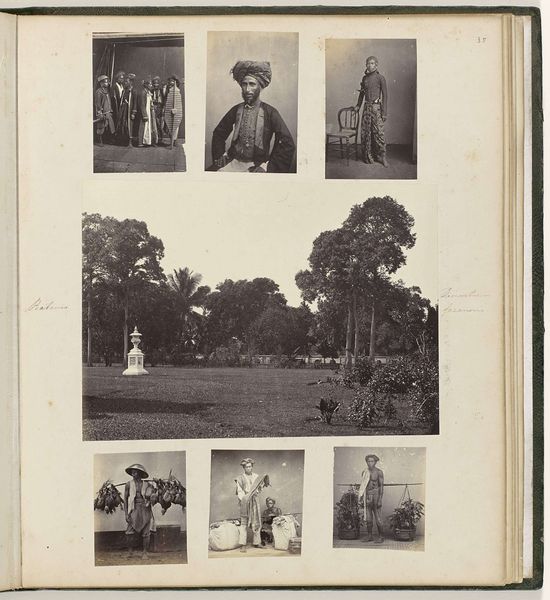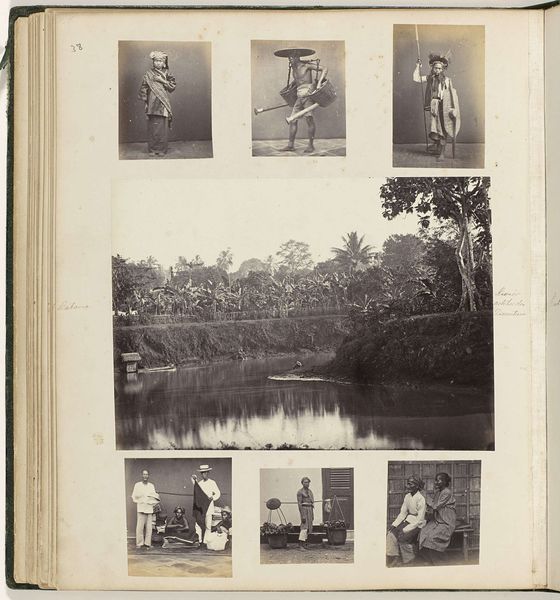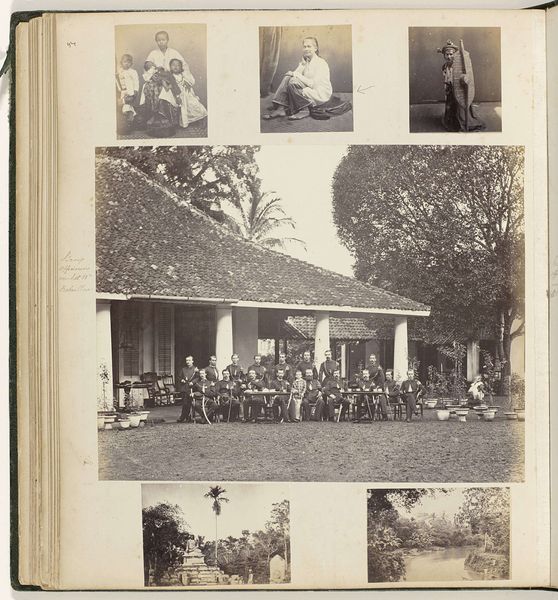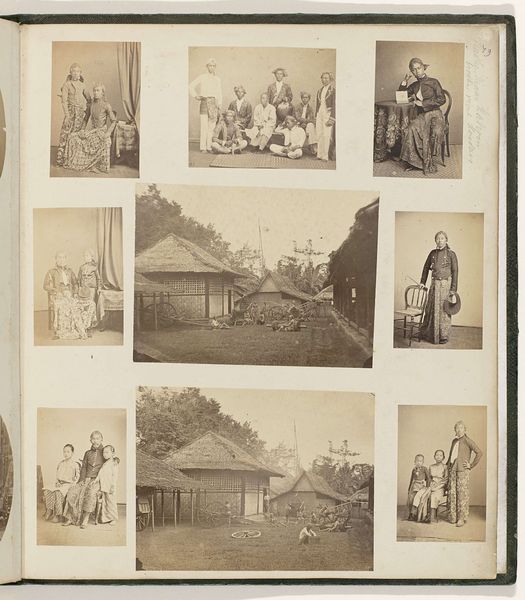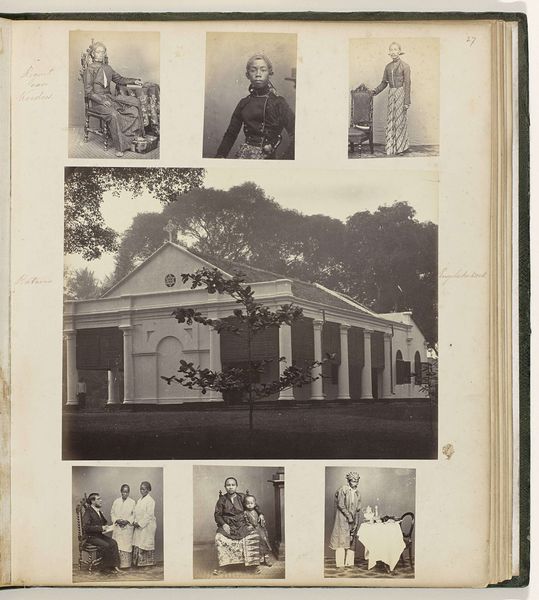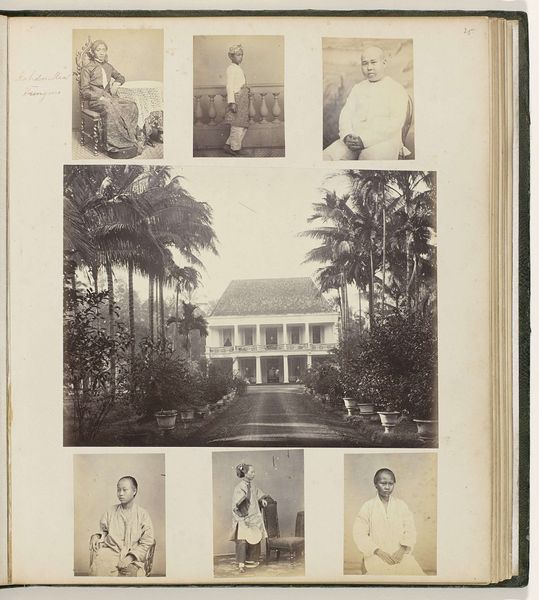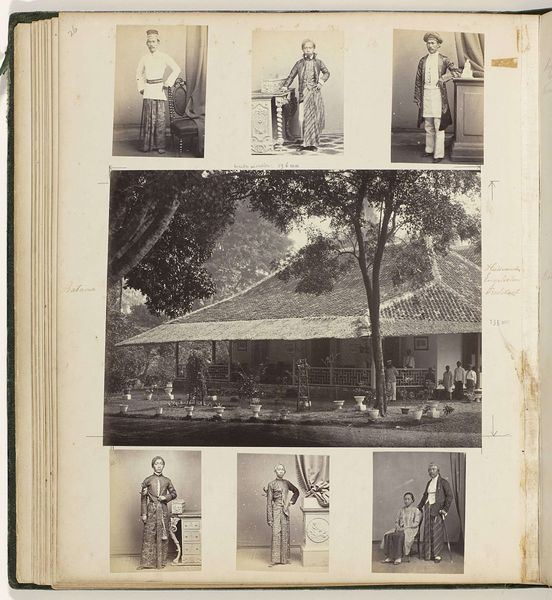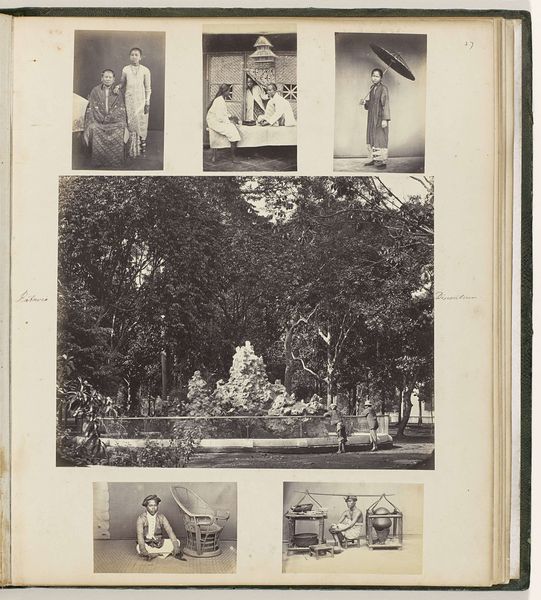
gelatin-silver-print, photography, gelatin-silver-print
#
gelatin-silver-print
#
sculpture
#
asian-art
#
landscape
#
photography
#
gelatin-silver-print
Dimensions: height 365 mm, width 305 mm, height 163 mm, width 240 mm
Copyright: Rijks Museum: Open Domain
Editor: This fascinating gelatin-silver print, titled "Dierentuin en portretten" by Woodbury & Page, was created sometime between 1864 and 1866. It's like a collection of photographic studies pasted onto a single page: portraits interspersed with a landscape view. What strikes me is the contrast between the posed studio shots and the more open, natural scene. What do you see in this work? Curator: The pasting suggests a system and highlights the photograph as an object—a commodity, even. Notice the material processes. Each albumen print meticulously produced and then arranged within the confines of an album page. Think about the labor involved: the photographers, the printers, and those who sourced the materials, even the people in the photographs who produced local craftworks. Editor: That's a great point! I hadn't really considered the production chain. How does the social context play into that? Curator: Well, Woodbury & Page operated in the Dutch East Indies during a period of intense colonial activity. The photographs document the local population, their dress, their environment. Consider them not as neutral representations but as artifacts of a power dynamic, where photography becomes a tool for cataloging and understanding--perhaps even controlling--a foreign culture for a European audience. The arrangement itself, these varied pictures pasted side by side, encourages a consumption of culture. Editor: So, even in its composition, the piece is about framing and selling an idea of a place. I never would have thought of the colonial implications so directly, seeing just portraits. Curator: Exactly! By examining the material means of production and how they were employed within a specific social context, we get closer to a fuller understanding of the work’s complex historical and cultural significance. What have you learned, viewing the image from this perspective? Editor: That it is more important to look beyond the pure representation and consider the materiality and means of production. Thank you!
Comments
No comments
Be the first to comment and join the conversation on the ultimate creative platform.
